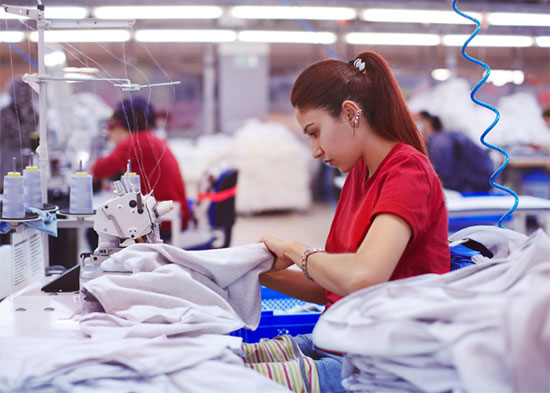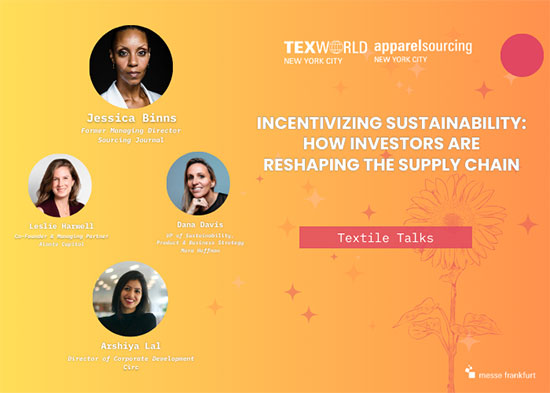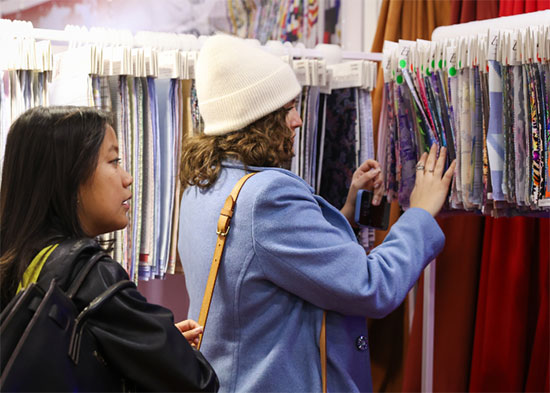March 14, 2024

Regulations are Coming: Here’s How They’ll Affect Sourcing
Until now, any attempts at cleaning up the apparel supply chain have largely been voluntary—and as a result, the pace of change is falling behind what’s needed to stem the negative impacts of climate change. With a slate of new environmental and social regulations popping up in the U.S. and EU, that’s all about to change. Through laws like the EU Corporate Sustainability Due Diligence Directive and the New York Fashion Act, fashion firms will soon be held accountable for their resource usage, waste contributions, greenhouse gas emissions, pay practices and more. This shift is likely to cause a seismic change in how the industry has typically operated—and where and with whom brands and retailers choose to work.
“Legislations that are coming in are going to force the fashion and apparel industry to make changes whether they want to or not irrelevant to the consumer,” said Nora Kleinewillinghoefer, partner at global management consulting firm Kearney. “Some of the laws that are coming through in Europe have personal penalties, not just corporate penalties, for executives in these fashion brands so that shift has to happen.”
In many ways, the Uyghur Forced Labor Prevention Act (UFLPA) is a precursor to the ways in which the new ESG regulations will impact supply chains. The law, which prohibits importing goods with ties to the Xinjiang region of China from entering the U.S., is designed to put pressure on the country to cease its forced labor practices. Both the UFLPA and the ongoing tariffs on goods from China have prompted an exodus from the country. In 2023, China represented just 12 percent of cotton apparel imported into the U.S., down from 30 percent in 2018, according to Sheng Lu, professor of fashion and apparel studies at the University of Delaware.
Vietnam, which has been a major benefactor of this movement, is also the origin for most of the goods stopped at the border for UFLPA violations. This is partially because fibers can be coming at any point in the supply chain and a result of bad actors attempting to transship goods from Xinjiang through the country.
Georgia Parker, innovation director for Fashion for Good, says technology is the answer to addressing these issues and helping companies get ahead of provisions in proposed U.S. and EU legislation. Already the industry is onboarding traceability tools like RFID, DNA and blockchain in an attempt to map and verify supply chains. That’s a major shift for an industry that has typically been opaque and reliant on little more than a paper trail for inputs and finished goods. This tech will enable brands and retailers to not only prove they’re conducting ethical operations but also meet the reporting requirements set by the new legislation. “With these platforms, hopefully the Whac-A-Mole popups in other places start to decline and you start to improve throughout the supply chain,” Parker stated.
With companies on the hook for reporting their activities and improvement, sustainability directors will finally have influence over every part of the organization, including sourcing and procurement, according to Frank Zambrelli, managing director, Global ESG Retail, Accenture. “This is where we see these efforts moving outside of just the sustainability teams… and really seeing the operating model shifts moving into the various leadership across the departments of organizations,” he said.
This shift within organizations should also help streamline and focus relationships up and down the value chain. The days of having the sustainability team send one message to suppliers and buyers sending another are already ending, Zambrelli said.
Now brands and retailers are seeking out suppliers with the best track records for compliance and the ability to verify their reporting. Already some brands and retailers are offering incentives in the form of better financing terms to partners that continuously remediate operations and offer innovative product that moves toward the circular economy. McKinsey & Company states regulation could also accelerate the industry’s trend away from transactional relationships toward longer-term partnerships in the form of volume commitments. The consulting company’s 2023 CPO survey showed that 51 percent of participating brands have made the shift, up from 26 percent in 2019.
As brands and retailers working in the U.S. and EU put pressure on their partners to comply, it will also have a knock-on effect for major production regions as well. For countries like Bangladesh, which relies on apparel for the bulk of its exports, the environmental and social mandates will likely spur them into investing in technology, infrastructure and incentives that keep their production facilities competitive. As ESG becomes a bigger priority for sourcing executives, countries that aren’t willing to do the same could lose out.

TextileTalk On Demand: Incentivizing Sustainability
Increasingly fashion is putting sustainability practices in motion, but to completely transform, the apparel industry needs to invest more time, energy and yes, dollars. Bringing new innovations to scale is a long-lead, cash-intensive undertaking. In Texworld’s TextileTalk, “Incentivizing Sustainability: How Investors are Reshaping the Supply Chain,” Dana Davis, VP of sustainability, product and business strategy, Mara Hoffman; Leslie Harwell co-founder and managing partner, Alante Capital; and Arshiya Lal, director of corporate development of textile recycling company Circ, discuss how to drive change that’s good for the planet and the bottom line.
For Davis, easing the financial burden comes down to collaboration. “A lot of the challenges that we see to be sustainable… has been more expensive, but when we all join forces and we all actually buy into something, the price comes down. So I think a lot of it is just ensuring that brands are getting on board so that we can actually move the needle,” she said.
A recording of the TextileTalk from January is now available. Tune in to learn:
- How to shift mindsets from competition to collaborations
- What investors get excited about when it comes to new tech
- The ways in which tech and industry can partner for change
- How to balance sustainability against profitability
- How to make a case for change that will resonate at the CFO level
Watch the discussion on demand here.

Mark Your Calendar: Texworld NYC July 16-18
Summer is right around the corner–and so is the next edition of Texworld NYC, Apparel Sourcing NYC, and Home Textiles Sourcing.
Plan to join us July 16-18, 2024 at the Javits Center in New York for the largest sourcing event on the East Coast, featuring materials ranging from sustainable textiles to functional fabrics and sophisticated knits to intricate laces, along with findings, trims, and accessories. Texworld NYC will be co-located with Apparel Sourcing where you can find finished apparel, contract manufacturing, and private-label development across ready-to-wear for men, women, children, and accessories. Plus, Home Textile Sourcing will feature fabrics and finished soft goods for all home applications.
Registration for the summer shows starts next week!

Home Textiles Sourcing Returns: Summer 2024 Edition
Home Textile Sourcing, in collaboration with CCPIT-TEX, returns bigger and better this July in New York. The show, which is co-located with Texworld NYC and Apparel Sourcing, is the destination to catch up on the latest trends and innovations in the home soft goods space. Exhibitors will showcase home textiles, including bedding, bath, table linens, floor textiles, pillows and cushions, and upholstered furniture. The show will provide direction on the colors, patterns, and materials driving consumers in the coming seasons. Don’t miss this one-stop resource for staying ahead of this dynamic home market.
Plan your trip today.

What We’re Reading
Rise of fast-fashion Shein, Temu roils global air cargo industry
Fast fashion accounts for about one-third of global long-distance cargo aircraft, according to Reuters. That translates into risk when disruptions like the one in the Red Sea occur because there’s little capacity to pivot to. Cross border e-commerce is pushing the freight industry to its limits and is “not sustainable,” according to one insider. Read the article to learn how the industry is attempting to rebalance shipments and accommodate the growing surge.
Material Innovators Must Navigate the ‘Hype Cycle,’ MII Says
The industry is facing the daunting task of pivoting to more responsible materials but there’s good news on that front: investment in material innovation was up in 2023. But, biomimicry is not without its challenges, said the Material Innovation Initiative. While the article points to successes like Tory Burch’s plant-based leather tote and Levi’s plant-based 501 jeans, other innovations struggle to come to market, and still others falter before they can come to scale. Read the article in Sourcing Journal to learn more about the biggest areas of opportunity, how regulation will impact its trajectory and why hype isn’t always a good thing.
Classic Elements Lead Trends to Support Sustainable Manufacturing
Comfort, wellness and sustainability are among the top factors driving consumers today, according to California Apparel News. A variety of production, tech and fiber executives weighed in on what they think consumers are gravitating toward today. The answers were varied but most agree shoppers want responsibly made product, with some stating consumers will soon expect verified claims as well. Another big focus is on value in the form of performance, durability and reliability as shoppers spend more consciously. Read the article to see how our industry is responding to these demands.